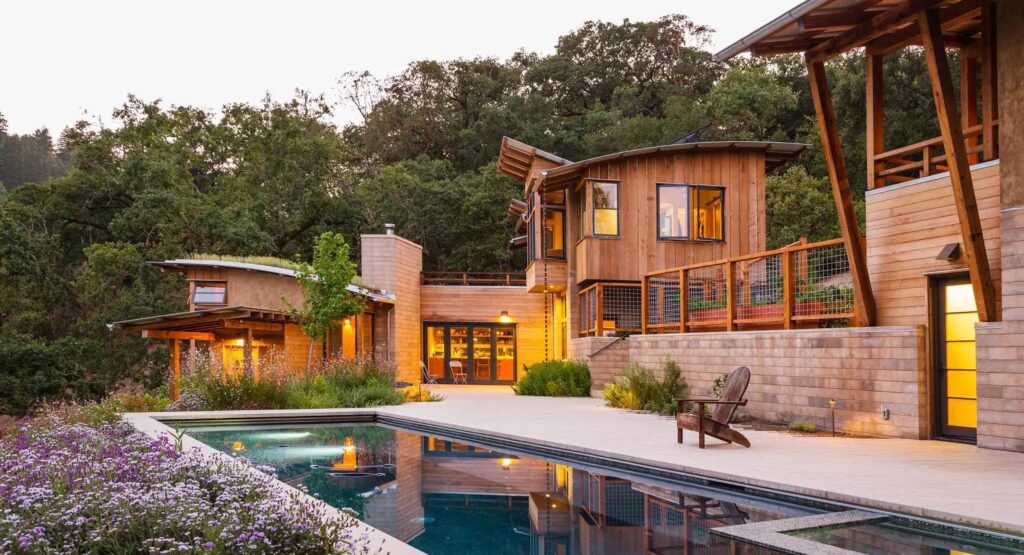Building a home in the mountains isn’t just about views — it’s about balance.
In Uttarakhand, where nature shapes every slope and breeze, Vastu Shastra offers practical harmony between structure and surroundings. While many follow it for spiritual peace, its science helps in creating homes that feel stable, bright, and naturally aligned with the hills.
1. Why Vastu Matters in Hill Regions
Vastu isn’t superstition — it’s logic refined through geography.
In Uttarakhand, uneven land and changing sun directions make layout planning tricky. Applying Vastu helps:
- Ensure sunlight and airflow in sloped terrains.
- Improve drainage and water flow alignment.
- Avoid structural imbalance due to uneven foundations.
Tip: Never apply plain-land Vastu directly to a hill plot. Adjust the layout as per slope and natural light.
2. Choosing the Right Plot According to Vastu
The base decides everything.
- Slope Direction: Best if the land slopes from southwest to northeast — it allows natural water flow and morning light.
- Avoid: Steep south-facing slopes; they hold heat and cause energy imbalance.
- Soil Check: Avoid plots with loose or eroded soil; stability is both an engineering and Vastu need.
👉 Before buying land, get both Vastu and technical verification done — Kumaon Planner can help with that.
3. Home Orientation & Entry Directions
Sunlight and wind play a major role in hill comfort.
- East or North Entry: Ideal for receiving morning sunlight.
- Avoid West Entry: Hills block wind and create shadowy interiors.
- Main Door: Should open inwards and be placed in the positive energy zone — north or northeast for most slopes.
4. Room Placement According to Vastu
Keep your plan simple, open, and light-aligned.
| Room | Recommended Direction | Reason |
|---|---|---|
| Living Room | North or East | Natural light and social energy |
| Kitchen | Southeast | Follows the “fire corner” rule |
| Bedrooms | Southwest | Stable and restful area |
| Toilets | Northwest or West | Keeps moisture away from core zones |
| Puja/Study | Northeast | Calm and undisturbed light flow |
5. Vastu Tips for Hill Home Construction
- Use natural stones and lime plaster — it balances heat and moisture.
- Avoid large water tanks in the south or southwest.
- Keep heavy structures (like pillars or storage) in the south or west.
- Use skylights to maintain sunlight in shadowed slopes.
6. Common Vastu Mistakes in Hill Houses
- Ignoring the actual slope while planning rooms.
- Using the same plan for plains and hills.
- Placing septic tanks or borewells in the wrong direction.
- Cutting slopes unnaturally to “fit” a plan — this disrupts both energy and drainage.
Helpful Guide: Common hill construction mistakes you must avoid.
7. Modern Take: Vastu + Architecture
Many modern architects in Uttarakhand blend Vastu with eco-design:
- Use passive solar design for energy savings.
- Align windows to catch valley winds naturally.
- Integrate water harvesting aligned to northeast slopes.
This approach respects tradition while staying practical.
Helpful Guide: eco-friendly design ideas
8. How Kumaon Planner Helps
If you’re planning to build or buy in Uttarakhand, Kumaon Planner ensures your home feels right from the ground up.
Our construction supervision and property consulting services help you:
- Align your home layout with Vastu and local building norms.
- Verify land slope, soil, and orientation before starting work.
- Maintain balance between eco-friendly design and comfort.
Because in the hills, a well-planned home isn’t just built — it’s placed right.
FAQs
Yes, but the slope must be studied first. Orientation and entry points are adjusted based on sunlight and terrain.
A northeast or east-facing slope is ideal for both sunlight and drainage.
Vastu complements smart architecture — it ensures natural balance, not superstition.
Yes, with minor layout or design adjustments like window placement or light direction.



